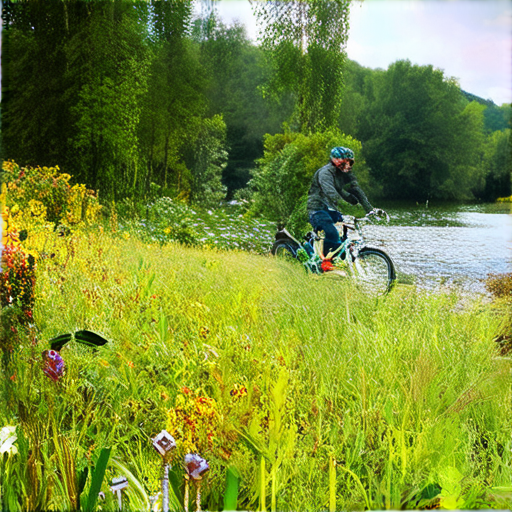Cycling can be an exhilarating experience, but it takes a toll on your body. Whether you’re a seasoned professional or a casual enthusiast, understanding how to recover from a grueling ride is crucial for achieving faster results and preventing injuries. With the right strategies, you can unlock optimal cycling recovery tips and get back on the road sooner. From knowing what not to do after cycling to mastering essential nutrition and heart rate zones, we’ll delve into the secrets of pro cyclists and provide you with actionable advice to take your cycling game to the next level.

Recovering Quickly After Cycling
As a cyclist, recovering quickly after a ride is essential to maintain peak performance and prevent injuries.
-
Hydrate Properly
Drink plenty of water or a sports drink to replenish lost fluids and electrolytes. Aim to consume 16-20 ounces of fluid for every pound of body weight lost during exercise.
For example, if you weigh 150 pounds and lose 2 pounds during a ride, aim to drink 32-40 ounces of fluid.
-
Refuel with Carbohydrates and Protein
Aim to consume a mix of carbohydrates and protein within 30-60 minutes after your ride to aid in muscle recovery and replenish energy stores.
Choose foods high in complex carbohydrates, such as whole grains, fruits, and vegetables, along with lean protein sources like chicken, fish, or beans.
-
Gentle Stretching and Foam Rolling
Engage in gentle stretching exercises to help lengthen muscles and improve flexibility.
Focus on major muscle groups like hamstrings, quadriceps, and hip flexors.
-
Rest and Sleep
Adequate rest and sleep are crucial for muscle repair and recovery.
Aim for 7-9 hours of sleep per night and take rest days as needed to allow your body to recover.
-
Compression Garments and Ice Baths
Consider wearing compression garments to help improve blood flow and reduce muscle soreness.
Taking an ice bath can also help reduce inflammation and promote recovery.
-
Light Activity and Massage
Engage in light physical activity, such as yoga or a leisurely walk, to promote blood flow and aid in recovery.
Massage therapy can also help reduce muscle tension and promote relaxation.
Remember to listen to your body and adjust your recovery plan accordingly.
By incorporating these strategies into your routine, you’ll be able to recover quickly and efficiently, allowing you to get back on your bike and perform at your best.
At Leeds Bicycle, we recommend prioritizing recovery to maintain optimal performance and prevent injuries.
Visit our website for more information on cycling techniques, gear reviews, and maintenance guides.
How Pro Cyclists Recover So Fast
We’ve all been amazed by professional cyclists who seem to bounce back quickly from grueling rides.
- Rehydration: Pro cyclists drink plenty of water before, during, and after races to replenish lost fluids and electrolytes. They also consume sports drinks containing sodium, potassium, and other essential minerals to aid in recovery.
- Nutrition: A well-balanced diet rich in complex carbohydrates, lean proteins, and healthy fats provides the necessary energy for optimal performance and recovery. Carbohydrate loading, in particular, helps increase glycogen stores in muscles, allowing athletes to perform at high intensities for longer periods.
- Sleep: Adequate rest and sleep are crucial for physical recovery. Professional cyclists typically aim for 8-10 hours of sleep per night to allow their bodies to repair and adapt to the demands of intense training.
- Massage Therapy: Regular massages help reduce muscle soreness, improve circulation, and promote relaxation. Expert massage therapists target specific areas, such as the legs, to push out lactic acid and other waste products that accumulate during intense exercise.
- Infection Prevention: Pro cyclists take extra precautions to avoid illnesses and infections, which can significantly impact their performance and recovery. They often work closely with team doctors and trainers to develop personalized strategies for staying healthy.
By combining these strategies, professional cyclists are able to recover faster and perform at exceptional levels. As cyclists ourselves, we strive to adopt similar habits to optimize our own performance and enjoy the many benefits of cycling.
Additional Tips for Faster Recovery
- Stay hydrated by drinking plenty of water and consuming sports drinks during and after rides.
- Eat a balanced diet rich in complex carbohydrates, lean proteins, and healthy fats to support energy production and recovery.
- Aim for 8-10 hours of sleep per night to allow your body to repair and adapt to the demands of intense training.
- Consider regular massages to reduce muscle soreness and improve circulation.
- Take proactive steps to prevent illnesses and infections, such as washing your hands frequently and avoiding close contact with people who are sick.
Leeds Bicycle Resources
For more information on cycling techniques, nutrition, and recovery strategies, visit our website at https://leedsbicycle.com/.

What Not to Do After Cycling
We’ve all been there – finishing a ride feeling exhilarated, yet exhausted. But what happens next can make all the difference between a great ride and a potentially disastrous outcome.
- Don’t neglect your bike’s maintenance
- Avoid ignoring your body’s signals
- Don’t underestimate the importance of stretching
- Be mindful of your nutrition
- Don’t ignore safety precautions
- Take care of your mental health
Regular cleaning and lubrication of your chain, gears, and brakes are crucial to extending the life of your bike and preventing costly repairs down the line. Make sure to check your tire pressure, tighten loose bolts, and clean any dirt or debris that may have accumulated during your ride.
Pay attention to your body’s warning signs, such as muscle soreness, fatigue, or dizziness. These could be indicative of dehydration, overexertion, or underlying medical conditions. Take regular breaks to rest and rehydrate, and consider consulting a doctor if symptoms persist.
After a long ride, your muscles are likely to be tight and sore. Gentle stretching can help alleviate discomfort, reduce muscle cramping, and promote flexibility. Focus on major muscle groups, such as your hamstrings, quadriceps, and hip flexors.
A well-balanced diet is essential for optimal performance and recovery. Fuel your body with complex carbohydrates, lean proteins, and healthy fats to replenish energy stores and support muscle growth. Aim to consume a mix of protein and carbohydrates within 30-60 minutes after your ride to aid in recovery.
Always wear protective gear, such as a helmet, gloves, and knee pads, to minimize the risk of injury. Be aware of your surroundings, follow traffic laws, and use designated bike lanes whenever possible.
Cycling can be mentally demanding, especially during long rides or challenging terrain. Practice mindfulness techniques, such as deep breathing or meditation, to manage stress and stay focused. Celebrate your achievements and don’t be too hard on yourself if things don’t go as planned.
Additional Tips:
- Stay hydrated
- Listen to your body
- Get enough sleep
Drink plenty of water before, during, and after your ride to prevent dehydration and maintain optimal performance.
If you’re feeling fatigued or experiencing pain, take regular breaks to rest and recover. It’s better to err on the side of caution and prioritize your safety and well-being.
Adequate rest is essential for physical recovery and mental rejuvenation. Aim for 7-9 hours of sleep per night to help your body repair and adapt to the demands of cycling.
Conclusion:
By following these simple guidelines, you can ensure a safe and enjoyable cycling experience. Remember to always prioritize your physical and mental well-being, and don’t hesitate to seek advice from a healthcare professional or experienced cyclist if you have any concerns.

Cycling Recovery Time
We understand the importance of allowing your body sufficient time to recover between bike rides.
-
Factors Affecting Recovery Time
- Intensity and duration of previous ride
- Your fitness level and overall health
- Age and individual recovery rate
-
General Guidelines for Cycling Recovery Time
- For low-intensity rides (<60 minutes), allow 12-24 hours for recovery
- For moderate-intensity rides (60-120 minutes), allow 24-48 hours for recovery
- For high-intensity rides (>120 minutes), allow 48-72 hours for recovery
-
Tailoring Recovery Time to Your Needs
- Listen to your body and adjust recovery time based on how you feel
- Consider incorporating active recovery techniques, such as light stretching or yoga, to aid in the recovery process
-
Importance of Proper Nutrition and Hydration During Recovery
- Adequate nutrition and hydration support muscle repair and replenish energy stores
- Focus on consuming balanced meals rich in protein, complex carbohydrates, and healthy fats
-
Additional Tips for Optimizing Cycling Recovery
- Get enough sleep (7-9 hours) to aid in physical recovery
- Stay hydrated by drinking plenty of water throughout the day
- Consider incorporating compression garments or foam rolling to aid in muscle recovery
-
However, incorporating rest days into your cycling routine is crucial for recovery and overall performance.
-
During rest days, your body has the opportunity to repair and rebuild muscle tissue, replenish energy stores, and adapt to the demands of regular cycling.
By understanding the factors affecting recovery time and tailoring your approach to your individual needs, you can optimize your cycling performance and reduce the risk of injury.
Do You Need Rest Days When Cycling?
Cycling can be an intense workout, pushing your muscles to their limits and leaving you feeling exhausted.
The Benefits of Rest Days
-
Improved Performance: Regular rest days allow your body to adapt to the demands of cycling, leading to improved endurance and reduced fatigue.
-
Reduced Injury Risk: Adequate rest and recovery reduce the risk of injury, allowing you to continue cycling without setbacks.
-
Enhanced Mental Health: Rest days provide a mental break, reducing stress and anxiety associated with intense physical activity.
How Often Should You Take Rest Days?
The frequency of rest days depends on individual factors, such as training intensity, duration, and frequency.
-
A general rule of thumb is to take one or two rest days per week, allowing your body to recover between intense cycling sessions.
-
Listen to your body and adjust your rest day schedule accordingly. If you’re feeling fatigued or experiencing muscle soreness, consider taking an extra rest day.
Tips for Effective Rest Days
-
Engage in light stretching or yoga to promote flexibility and relaxation.
-
Avoid high-intensity activities, opting for low-key pursuits like reading, walking, or meditation.
-
Focus on nutrition, consuming balanced meals and snacks to support recovery and muscle growth.
Conclusion
Incorporating rest days into your cycling routine is essential for optimal performance, injury prevention, and overall well-being.
By prioritizing rest and recovery, you’ll be able to tackle challenging rides with confidence and enthusiasm, achieving your cycling goals and enjoying the many benefits of this rewarding sport.

Why Are My Legs So Heavy After Cycling?
Cycling can be an excellent workout, but sometimes we may experience heavy legs after a ride. There could be several reasons behind this phenomenon.
- Glycogen Depletion
- Dehydration
- Lactic Acid Buildup
- Muscle Imbalances
- Nutrient Deficiencies
When we cycle, our bodies rely heavily on stored glycogen for energy. Glycogen is a complex carbohydrate stored in our muscles and liver. Once these stores are depleted, our bodies start breaking down muscle tissue for energy, leading to fatigue and heavy legs.
Dehydration can cause feelings of fatigue, dizziness, and heavy legs. When we don’t drink enough water before, during, or after a ride, our bodies can’t function properly, leading to decreased performance and discomfort.
Lactic acid is a byproduct of intense exercise, particularly high-intensity interval training (HIIT). When we cycle at high intensities, lactic acid builds up in our muscles, causing fatigue, cramping, and heavy legs.
Muscle imbalances occur when certain muscle groups become overactive or underactive, affecting our overall cycling efficiency and comfort. Weak glutes, tight hip flexors, or overactive quadriceps can contribute to heavy legs and poor pedaling technique.
A diet lacking essential nutrients, such as iron, magnesium, or potassium, can lead to fatigue, weakness, and heavy legs. These deficiencies can be exacerbated by intense exercise, making it crucial to fuel our bodies adequately.
Preventing Heavy Legs During Cycling
To minimize the risk of heavy legs during cycling, consider the following:
- Fuel Properly
- Stay Hydrated
- Incorporate Strength Training
- Listen to Your Body
Eat a balanced diet rich in complex carbohydrates, lean proteins, and healthy fats to maintain optimal energy levels.
Drink plenty of water before, during, and after rides to prevent dehydration and maintain electrolyte balance.
Engage in strength exercises targeting your core, glutes, and legs to improve cycling efficiency and reduce muscle imbalances.
Pay attention to your body’s signals, taking regular breaks to rest and recover. This will help prevent overexertion and reduce the likelihood of heavy legs.
Recovering from Heavy Legs
If you’re experiencing heavy legs after cycling, try the following recovery strategies:
- Stretch and Foam Roll
- Take a Warm Bath or Shower
- Get Enough Sleep
- Consider Compression Garments
Focus on stretching and foam rolling your major muscle groups, including your hamstrings, quadriceps, and calves.
Taking a warm bath or shower can help relax your muscles and promote blood flow.
Adequate sleep is essential for muscle recovery and rebuilding. Aim for 7-9 hours of sleep per night.
Wearing compression garments, such as tights or sleeves, can help improve circulation and reduce muscle soreness.
By understanding the causes of heavy legs and implementing prevention and recovery strategies, you can optimize your cycling performance and enjoy a more comfortable ride.

0 Comments